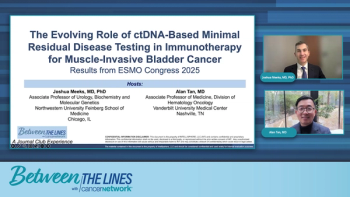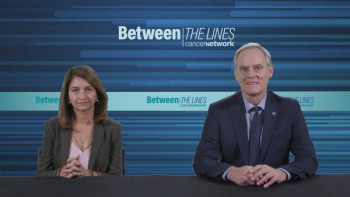
Opinion|Videos|May 29, 2025
CRS Recognition and Intervention: Timing and Clinical Features
Panelists discuss how recognizing and grading cytokine release syndrome (CRS) based on symptoms ranging from mild flulike effects to life-threatening conditions is essential for timely intervention, with early detection being key to managing CRS effectively and preventing progression to severe stages.
Advertisement
Episodes in this series

Summary for Physicians:
Cytokine Release Syndrome (CRS) Recognition and Intervention
- CRS recognition:
- Commonly occurs within 24 to 48 hours post infusion.
- Symptoms include fever, chills, tachycardia, hypotension, dyspnea, and rash.
- Grading CRS:
- Grade 1: Mild fever and flulike symptoms, manageable with supportive care
- Grade 2: Moderate symptoms (eg, hypotension), requires medical intervention (eg, fluids, antipyretics)
- Grade 3: Severe symptoms (eg, hypoxia, multiorgan involvement), requires steroids and possibly tocilizumab
- Grade 4: Life-threatening, requires emergency management and intensive care unit care
- Intervention:
- Grade 1: Symptom management (eg, acetaminophen, hydration)
- Grade 2: Intravenous fluids, antipyretics, monitoring
- Grade 3/4: Corticosteroids, tocilizumab (IL-6 inhibitor), and intensive monitoring
Challenges:
Early recognition is crucial for effective management and preventing progression to severe CRS.
Newsletter
Stay up to date on recent advances in the multidisciplinary approach to cancer.
Advertisement
Advertisement
Advertisement
Trending on CancerNetwork
1
ASH 2025: Key Anticipated Updates in the Leukemia Landscape
2
ASH 2025: Which Presentations Will Move the Multiple Myeloma Needle?
3
Real-World Elranatamab Maintains Responses in Elderly, Frail R/R Multiple Myeloma
4
Fixed-Duration Venetoclax Combos Show Noninferior PFS to Ibrutinib in CLL
5















































































